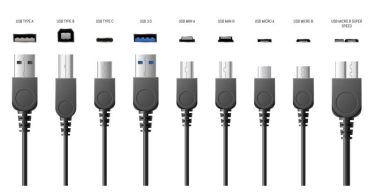Curriculum and syllabus are two essential elements of the educational process, but they serve different functions and have distinct characteristics. A curriculum is a plan for teaching and learning in an academic context. It includes the course or program’s educational objectives, content, learning experiences, instructional methods, assessment techniques, and resources. The curriculum provides a broad framework that guides the overall educational experience, ensuring that students acquire the knowledge, skills, and competencies required for future vocations or further study. Typically, it is designed by educational institutions, boards, or authorities, taking into account local, national, or global standards as well as the needs and interests of the students.
Conversely, a syllabus is a detailed document that outlines the specific topics, learning objectives, course structure, assessment criteria, and timelines for a particular course or subject within the broader curriculum. It functions as a road map for teachers and students, outlining course expectations and guiding the progression of topics and activities. Typically, individual teachers or subject matter experts construct the syllabus, which enables them to tailor their instructional approach and materials to the specific needs of their students and course objectives. Curriculum provides a comprehensive framework for an entire educational programme, whereas a syllabus focuses on the particulars and organisation of a single course or subject within that programme.
What is Curriculum?
A curriculum is a set of goals, objectives, content, teaching and learning experiences, evaluation methods, and resources for a course or programme. It is a living document reviewed and changed occasionally to represent changes in society’s needs, progress in pedagogical research, and the discovery of new information. It gives teachers a plan for planning, carrying out, and analysing teaching and learning processes to get the desired results. Educational institutions, boards, or authorities usually make the curriculum, considering local, national, or global academic standards and learners’ unique needs and interests.
Curriculum design considers several essential factors, including:
Goals and Objectives
Learners should be able to achieve clearly stated educational goals.
Content
The study or programme will cover the topics and skills taught.
Pedagogy
Strategies, methods, and tasks for teaching and learning are used to get the information across.
Assessment
Methods and tools used to measure the growth and achievement of learners.
Resources
Materials and help methods are needed for teaching and learning to go well.
A well-designed curriculum lays the groundwork for high-quality education. It helps students improve their critical thinking, problem-solving, and communication skills, preparing them for future academic, professional, and personal success. In short, the curriculum is a big plan that guides the whole learning process and ensures that students get the knowledge, skills, and abilities they need to reach their goals.
What is Syllabus?
A syllabus is an essential tool for successful teaching and learning because it makes sure that everyone involved has the same understanding of the course’s purpose, content, and requirements. It gives teachers and students a clear idea of what is expected of them and how topics and tasks will move forward. A detailed and well-organised syllabus lists the specific topics, learning goals, course structure, evaluation criteria, and due dates for a particular course or subject within a more extensive educational programme. Most of the time, individual teachers or subject matter experts make the syllabus. They adapt their teaching style and tools to meet their student’s needs and the course’s goals.
Some important parts of a syllabus are:
Course Overview
A summary of the course, including what it’s about, why it’s essential, and what its goals are.
Learning Objectives
Students should be able to do certain measurable things by the end of the term.
Course Content
A clear outline of the topics, subtopics, and ideas to be covered, often organised into groups or modules.
Assessment Methods
Explain the different types of assessments, such as quizzes, exams, assignments, and projects, used to measure student growth and achievement.
Course Schedule
A schedule that shows the order and length of topics, tasks, and tests.
Course Policies
There are rules and guidelines about attendance, involvement, academic honesty, and other expected things.
In short, a syllabus is an integral part of education that focuses on the details and structure of a single course or topic. It helps set clear goals, encourages effective learning, and supports teachers and students in having an excellent educational experience.
Difference Between Curriculum and Syllabus
Differences in scope, aim, and function characterise the main distinctions between a curriculum and a syllabus. An educational program’s curriculum is the overarching framework for the course of study, including the intended outcomes, subject matter, activities, strategies, and materials used to achieve those outcomes. It offers a comprehensive structure to direct the learning process as a whole. On the other hand, a syllabus is a more in-depth document that lays out the course’s specific content, learning objectives, course structure, evaluation standards, and timeframe. It guides the course, helping instructors and students understand what is expected of them and what comes next. We’ve detailed and underlined the main differences between the two below.
Scope
In contrast to the syllabus, which is focused on a single course or subject, the curriculum encompasses the entire educational programme.
Purpose
The curriculum is the overarching plan for education, whereas the syllabus is the detailed plan for each course.
Design
Individual teachers or subject experts often establish Syllabi, while curricula are designed by educational institutions, boards, or authorities.
Goals
While a course’s syllabus will explain its specific learning outcomes, the curriculum will outline its overarching goals and objectives.
Content
The curriculum describes what students can expect to learn for the duration of a programme, while the syllabus details what will be covered in a particular course.
Pedagogy
The curriculum is the overarching plan for how a programme is taught and learned, whereas the syllabus is the plan for how a single course is taught and learned.
Assessment
The curriculum specifies broad assessment methods and standards, whereas the syllabus details tests and quizzes in a given course.
Adaptation
The curriculum undergoes regular reviews and updates in light of developments in society and educational research, while individual teachers adapt their syllabi to the needs of their classes and the goals they hope to achieve.






